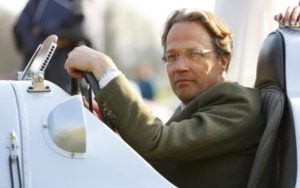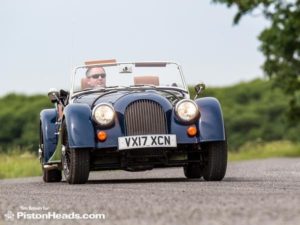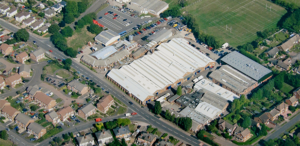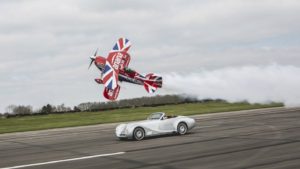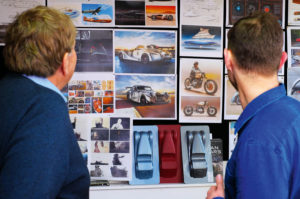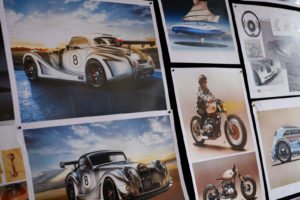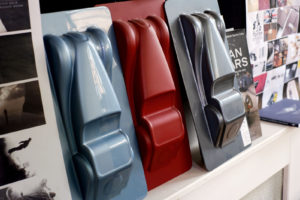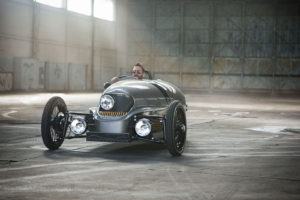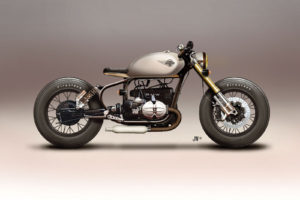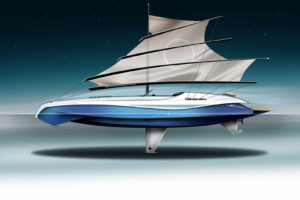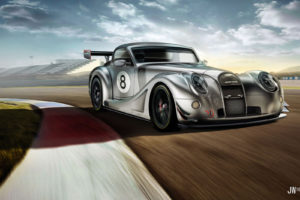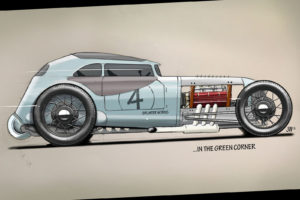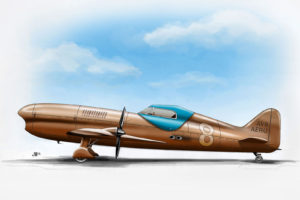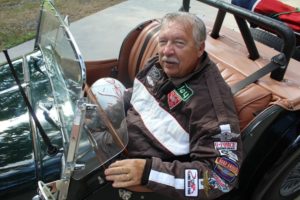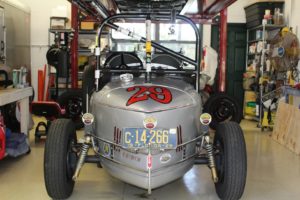The Pinehurst, NC Concours 2017
Andrea and I ventured north to the Pinehurst Concours d’Elegance in North Carolina. A short few days after the great Greenville, SC caper. Lots of travel in the Carolinas this year.
Pinehurst is a great venue for a classic car show and going north provided us with the opportunity to visit with a few MOGSouth members in the area whom we really like. Pat and/or Jack Zimmerman are typically involved in some aspect of the Concours; and, this year, Jack served as chief of all of the Class Attendants. (Den Mothers??) The Class Attendants are really quite useful as they provide a communications channel between the folks showing cars and the organizers of the event. There are always questions, like ‘why is it so cold’?? And, ‘where do I get coffee’?? I am sure there are more important questions but this year we got very basic. We trip north also gave us the opportunity to have dinner with Jack and Pat, Jim and Jeanne Vincent, and Don and Maddie Moodie. Also, we linked up with an Aero 8 owner in the area who has yet to join MOGSouth.
I was anxiously anticipating our trip to Pinehurst, NC until the day before (Wednesday) the day before (Thursday) the day before (Friday) the show (Saturday). That was the day I needed to load the 1934 Super Sports Three Wheeler but the car had been problematic. I had been having troubles with the starter alignment to the ring gear. Basically, the starter spins the ring gear which spins the engine.
The starter turned fine but it wasn’t properly aligned to the ring gear. Sometimes it turned the gear, sometimes not. Rick Frazee and I had played with this a few days earlier. The culprit is the crazy mount of the starter. I have to attribute the design of this *&33v)@@g mount to someone, somewhere else. It is just not good. After a few trips up and down on the lift, I had it where I thought it would work. It started briefly so I declared success . . . well, it turned out that my declaration of success was a bit premature.
I winched the car into the trailer hoping for another bout of success once in Pinehurst. It was getting late so I hooked up the trailer to the car and tested the trailer lights and rear view camera. All was ok. I was bushed and dragged myself back into the house, knowing we had a drive in the morning. Thursday morning came (as usual, too early) and we finished packing the car and headed north. No marathon drives for us anymore. We just needed to get to Savannah. We’d finish the trip on Friday morning. The drive up I-95 was dull. But with I-95, dull is good.
We arrived at the designated hotel in Savannah late in the afternoon. Parking out back with the SUV and trailer was a breeze. Andrea picks hotels and uses the magic of the internet to find us ones with good parking for the car and trailer. She used Google Maps and looks at the Satellite photos to verify decent parking for car trailer. Also part of her plan included a bar and grill right next store, so a place for dinner and a beer within walking distance. Then to bed. Soon it was Friday morning and we faced cardboard waffles at the Hotel. Nope, not this time, we opted for the good stuff! There was a Waffle House just down the road.
We arrived in Pinehurst on Friday just after lunch and the parking for the show car trailers was at the harness racing track just adjacent to the show field (Pinehurst No.2 golf course). The plan was to unload the car from the trailer and drive it over to the show field. Putting the car on the show field on Friday afternoon seemed to be better (at least to Andrea) than getting up at the crack of dawn to have the car on the field NLT 8AM.
Well, the car wouldn’t start, even after numerous attempts, so a tow was needed. After a few grinding noises I got nervous. I didn’t want to make it worse. A few youngsters with a diesel powered ATV and a tow strap were soon put to good use and we motored (albeit very quietly) onto the show field and found our designated spot. Our class was Pre War European Classics. This could be good or bad. The only other car there on Friday was a 1935 MG PB. A lovely two toned red car, well restored and nicely presented. I wouldn’t be disappointed if I lost to this MG. If only the MG was the worst of my problems.
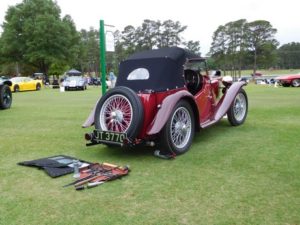
1935 MG PB (Photo Courtesy of Andrea Braunstein)
Well, when we arrived Saturday morning it seems that they had brought in the big guns. The rest of my Class had arrived. And, I swear they needed harbor pilots and tug boats. The MG and the Morgan were joined by a very large, BRG leather covered 1927 4.5L Bentley, an equally large 1928 Mercedes Benz S-Type 26 Convertible, a 1935 SS90 (predated the SS100 by a year) with a wicked blue (supposedly Bugatti Blue) paint job and a 1925 US bodied (Piccadilly it was called) Rolls Royce Silver Ghost. These cars are all massive compared to the Morgan. Size doesn’t matter. Andrea said so!
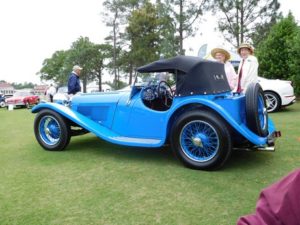
1935 Swallow Sidecar 90 (SS – Evolved into Jaguar) (Photo Courtesy of Andrea Braunstein)
Also in the show was a 1951 Plus 4 Flat Rad Drop Head Coupe (in a post war class) belonging to Harry Gambill, who is also a MOGSouth member. [Spelling error and typo in previous version – darn autocorrect … Sorry Harry] His car was beautiful (darn near perfect?) and an exceptional Morgan, with racing provenance, but it didn’t win any awards either. Morgans seem to be at a disadvantage at any Concours.
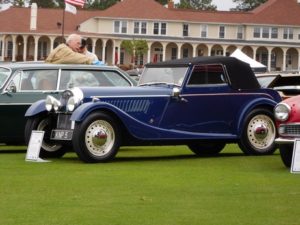
1952 Morgan Plus 4 Drop Head Coupe (Photo Courtesy of Andrea Braunstein)
I have come to believe that showing a Morgan at a Concours event, any Concours event, and hoping to win something is sheer madness. Winning your class is a totally unrealistic expectation. Morgans are not fancy cars. And, are hopelessly underwhelming in Pre War Classes. They don’t have the jewels or bling of the MGs or the elegance of design of the Bugatti, Mercedes, Rolls Royce, [insert just about anything here]. What they do have is personality and character. And, the Super Sports Three Wheeler just oozes character . . . as well as all sorts of other things, e.g. oil, water, fuel, etc.
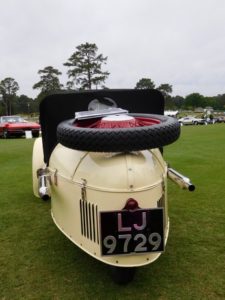
1934 Morgan ‘Matchless’ Supers Sports Three Wheeler (Photo Courtesy of Andrea Braunstein)
These little cars do attract crowds of folks and certainly the kids. They are enthralled as the Morgans are not so huge and imposing. The diminutive size of the Morgans makes them just that much more approachable. Lately, following Rick Frazee’s lead, I have been having the parents put the kids into the car for photos. They can’t hurt anything and if we want some younger folks to get excited by the cars we need to accommodate them in some way, other than the usual ‘don’t touch’, ‘don’t get too close’ . . .
The weather wasn’t too warm, quite the opposite, overcast, windy, cool and spitting. It was freezing cold the first time we went to this Concours in 2013. The locals all swear it is always nice, warm and sunny in Pinehurst, except when we come up. They started blaming the weather on us. Ok, so Pinehurst is cold when we come up. Not sure what that means?
At one point Jack Zimmerman had to shuttle Andrea to the club house in his golf cart so she could get warm. I waited in the rain for the judges and amused myself with my Morgan’s impressive array of tools. The SS90 (Jaguar) owner displayed a fine collection of tools, laid out in rows on his tonneau. He had numerous hand books and operators manuals, even a large air pump to inflate tires. On the other side of the Morgan was the MG PB. The MG owner had followed the SS90’s lead and laid out his car’s tools. A period jack, with wooden jack handles, a full supply of Whitworth spanners (wrenches), and several MG special tools, all emblazoned with MG logos. Quite impressive.
Not one to be outdone, I laid out my Morgan’s tools neatly behind the car – the hand crank and the wooden dowel used as a fuel gauge. Well, at least I got a chuckle out of it, even if the judges didn’t notice.
Interestingly enough, the Judges weren’t the usual Morgan neophytes. They actually seemed interested and had some ancillary knowledge of the marque. I was chastised however for not mentioning that the engine was a ‘Matchless’ one as opposed to a J.A.P. engine in my description of the car. Still not sure why that mattered? And, I guess the large ‘M’ on each of the rocker boxes gave that detail away. The good news was that the lights and horn worked, when they had to. Simple things. Yeah!
The weather actually lightened up a bit as the day evolved. There were a few patches of blue sky and sun but not many. The show itself was well run, organized and executed. Again, they used the local high school students as junior judges and entered the judges’ scores into the computer, in real time. No sooner was the judging over, all the deductions were tallied and the winners known. No waiting or heated discussions about dust or unnecessary chrome. Pretty cool!!
Then the show was over and a Sara Evans (Country Singer) concert began. We moved the car back to the trailer in lieu of listening to the concert, and then headed back to the hotel to freshen up for dinner.
Oh, and that US Piccadilly bodied Rolls Royce? It not only won Best of Class (my class), it also won Best of Show. It turns out that it was a ‘barn find’ of a very rare Piccadilly Rolls Royce whose original owner was none other than Howard Hughes. And, to pile it on more, its restoration was completed just 3 weeks ago. [So, do you want to see my hand crank and fuel gauge?]
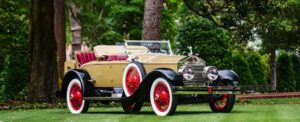
1925 Silver Ghost Rolls Royce (Photo Courtesy of SC Digest)
Jack and Pat picked us up at our hotel and transported us to dinner, where we joined Jim and Jeanne, and Don and Maddie. Dinner was superb and the company even better!
After Saturday dinner, it was back to the hotel and early to bed.
Another travel day in the morning. This time we headed west to Augusta, GA to see Graeme and Jenny Addie. It was Sunday and pretty quiet on the highways. Once in Augusta we dropped our trailer with the car inside, at Jenny’s dog park. Jenny has Agility and Herding dogs and exercises them, with all the necessary equipment, in her own dedicated dog park a few miles from their home. The trailer and car will stay there until our next great Morgan adventure, the North American Morgan Three Wheeler Convention, 18-22 May, there in Augusta. It seemed silly to drag the trailer all the way home, just to turn around and drag it back to Augusta.
We joined Graeme, Jenny, Emma and Brian (Graeme’s daughter and her husband) and the grand kids for a quick Sunday dinner and then headed back to our hotel. We hated to leave, but wanted to get an early start in the morning and make the trip from Augusta to Sanford, FL in one day.
We made it home without too much drama. A good thing. Our Mercury Mountaineer SUV, the tow vehicle, is showing its age. The bushings affixing the torsion bars are worn and the SUV wobbles down the road with an occasional clank or clunk. It also has a noisy exhaust leak, and the hood and rear window won’t stay up (aging hydraulic props, I guess) and a host of other age related failings. I will have to get it to the local dealer very soon. It is way too modern for me to work on. I only understand archaic engineering . . . like Morgans.
Mark

